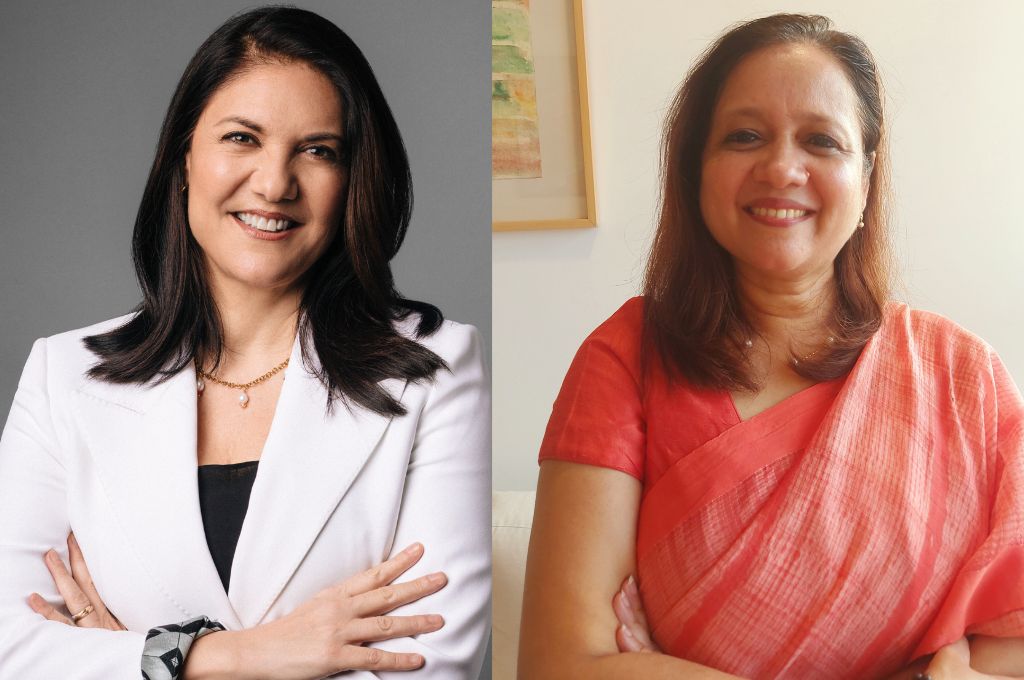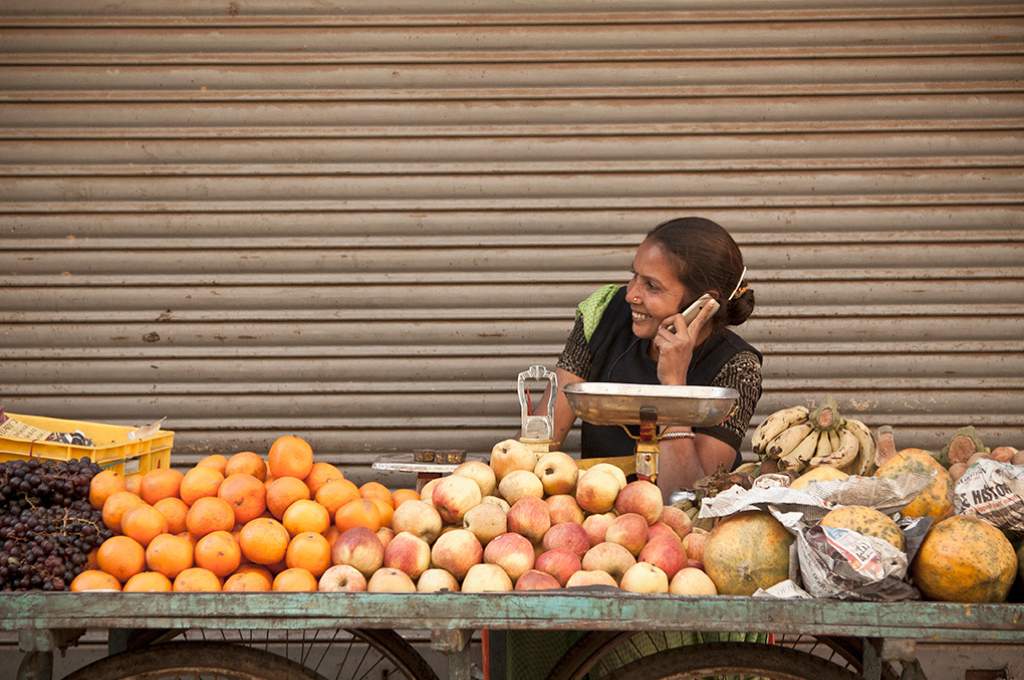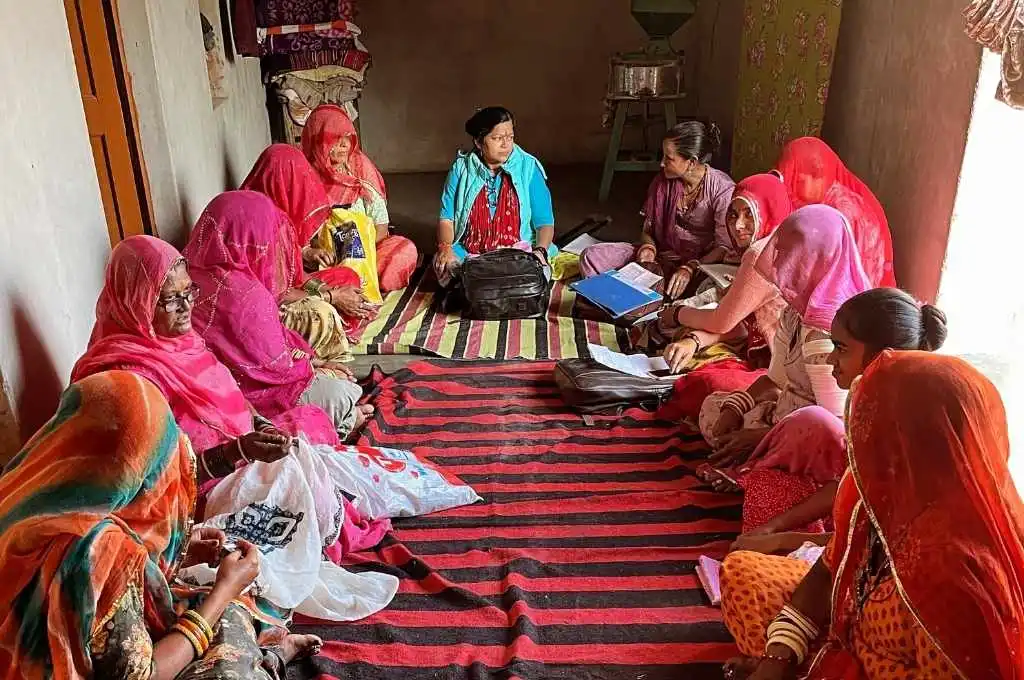Women in India remain underserved by the financial sector, as one in every five women in the country lacks access to a bank account. Initiatives such as the Pradhan Mantri Jan Dhan Yojana (PMJDY), which aims to provide banking services to underserved communities, are necessary steps in the right direction. However, there are still certain barriers to women’s financial inclusion.
In a bid to address these gaps, Women’s World Banking (WWB) has partnered with relevant stakeholders in the financial sector to bring women-centred products, services, and policies to the market. At WWB’s Making Finance Work For Women Summit, IDR interviewed Mary Ellen Iskendarian, president and CEO of WWB, and Kalpana Ajayan, WWB’s regional head for South Asia, on the subject.
In this interview, Mary Ellen and Kalpana discuss investments that have been made towards enabling women’s financial inclusion, the gaps that still remain, and the challenges in developing financial products and services while working with partners worldwide to advance women’s economic empowerment. They also touch upon the inextricable link between digital literacy and financial inclusion in a world where digital financial services have become ubiquitous.

How does India compare with other emerging markets when it comes to financial inclusion for women?
Mary Ellen: One of the biggest concerns we have in India that we don’t quite see to the same extent in other countries is the lingering social and cultural norms around owning smartphones. It’s a real issue here. That said, the investment that India has made in its digital public infrastructure—the Aadhaar system, PMJDY accounts, and UPI system—is head and shoulders above where other emerging markets are at the moment. I am thrilled that India is eager to export some of this work to other countries, with the G20 presidency really shining a light on how much tremendous work has been done here. It also shows what that kind of upfront investment can do and what kind of dividends it can pay down the line.
Speaking of investments India has made on this front, what else do you think needs to be done in the next five years to improve access to finance for women?
Mary Ellen: The PMJDY is a great innovation, but we at WWB have observed that although women in India open PMJDY accounts, their accounts tend to remain dormant. This suggests that the product either isn’t relevant to them or that they are not convinced of its relevance to their lives. So, I think that it will be critical for any infrastructure or product development that is rolled out in India over the next five years to take a step back and think, “How can we take women’s needs and the barriers women face into consideration before we launch?” Our work here in the last few years has been very focused on that issue of engagement with the PMJDY account. We, therefore, rolled out a savings product called Jan Dhan Plus alongside Bank of Baroda, and we’ve taken this to Indian Bank and Union Bank. We’re trying to incentivise women to save and to build savings behaviour. And once they’ve engaged with this account, there’s an opportunity then to cross-sell other products.
Bringing more women into the workforce of the financial sector is a great investment that India has begun.
One of the other things that I think parts of India are doing in a very exciting way is driving more women business correspondents (BCs) and women agents. The implementation of the BC Sakhi programme, which seeks to promote digital banking through women banking correspondents, has resulted in more women signing up for accounts, and a higher rate of conversion from signing up to actually depositing money. So, I think bringing more women into the workforce of the financial sector is another great investment that India has begun and should enhance in the next five years.
Kalpana: I also think that women’s access to credit is something that really needs to be addressed. And we’ve been working with the apex credit bodies in this country for this. In fact, Mary Ellen and I met the chairman of the Small Industries Development Bank of India (SIDBI) recently, and they expressed a willingness to offer loans to women entrepreneurs at rates that are significantly lower than commercial rates. But since most women in India don’t have a credit footprint, they’re rendered invisible to the institutions seeking to enable their access to credit. So how do you really make these women visible? I think this is what we must solve in the near future.
Mary Ellen: I think it’s worth doubling down on that, as many people may not understand this invisibility. For example, the self-help group (SHG) is an extraordinary institution, but often only one member of the group has any identification, which is actually just used for naming the group. So, she’s not even necessarily identified as the borrower. Therefore, the idea we discussed with SIDBI involves ensuring that the loans and repayment track records of these invisible women, who have been borrowing and have great repayment records, get registered with credit bureaus.
Research shows that barriers to finance for women have been as much about the ecosystem (market, social norms, etc.) as about lending institutions providing capital. How do you suggest we address this? And who needs to be working on it?
Kalpana: There is space for nonprofits engaged with women, financial institutions, and policymakers to work within their arenas to facilitate meaningful change. There is a definitive role for everybody in the ecosystem, including the husbands. For example, if there’s a phone in the household, does the wife get access to that phone? There are multiple ways in which you can make women participate. The Open Network for Digital Commerce (ONDC) is a great platform, and it can really help nano and micro-entrepreneurs by enabling their linkage to markets. For example, how will a small pickle-maker in the interior of Maharashtra get their product out? That’s where the ONDC can play a significant role. But how do you even bring her on board? How do you build visibility and awareness about an initiative such as the ONDC? I think there are many stakeholders in the ecosystem that need to work on it.

Mary Ellen, you’ve previously spoken about the improved access to smartphones for women. I was wondering if you could speak about the intersection of digital literacy and financial inclusion?
Mary Ellen: There isn’t just an intersection any more. The delivery of financial services to the last mile at an affordable price is going to be digital. So, it’s absolutely essential that women are confident in their use of the phone, and it’s very much the centrepiece of every product roll-out we conduct. We’ve done quite a bit of work on what we’re calling ‘digital financial capabilities’, because this isn’t just about understanding which buttons to press or being numerate, but really feeling a sense of confidence and ownership. The reason we fight so hard for financial inclusion is that we see it as fundamental to women’s empowerment. But if they’re not empowered to use the technology that will enable this inclusion, it’ll be a great loss.
Kalpana: Our definition of digital financial capabilities includes not just a skill and knowledge component, but also an attitude component. And that attitude is trust and confidence. So, for me, it’s not just about having the skill and knowledge to operate within the financial system, but you need to be confident and trust the system to meaningfully engage with the system.
What are some models or approaches that haven’t worked in emerging markets like India? And what are some that have seen more success? What can we learn from those?
Kalpana: A gap that still remains is the urban market. We’ve tried several initiatives in the urban market for low-income women, but we’ve realised that interventions such as educational camps—which are ideal for rural markets—don’t work in urban ones. This is because women in urban areas simply don’t have the time to assemble at a place and listen to people speak about financial literacy and related issues.
When we moved to rural regions from the three urban centres of Delhi, Mumbai, and Chennai—where we piloted the Jan Dhan Plus programme—we had to unlearn these things and introduce strategies that are relevant to the rural segment.
Mary Ellen: I won’t have as clean an answer as Kalpana, but there’s one thing that’s the greatest source of frustration for me, which I’m so determined to fight. So, WWB believes very strongly in the concept of customer lifetime value. This means that when we introduce a product to a financial service provider, we indicate how it would make this new client or a completely dormant client (as in the case of Jan Dhan Plus) profitable over a long time. When we present that kind of data to substantiate a pure bottom-line-driven argument but are met with rejection from the management of an organisation, I just feel like screaming.
When we have an MD or a CEO who’s really committed to the cause, they’ll push the initiative through.
I think it’s important to find a strategy that tips the balance, whether it’s being able to show greater risk mitigation through a product or present the issue as one that the senior leadership can adopt as a personal cause. The latter has been a very successful strategy for us, because when we have an MD or a CEO who’s really committed to the cause, they’ll push the initiative through. But this can be a source of immense frustration. And we’ve experienced this in all the regions that we work in.
But there’s also hope. For instance, there was a digital wallet that we delivered for a bank in another South Asian market. Again, we were able to demonstrate a customer lifetime value, but management broke our hearts and decided not to take it forward. But not even a year later, a bank in another country approached us with the agenda to implement something similar, and this bank is now doing gangbusters with literally the same model, with some local amendments to the product.
The economic crisis triggered by the pandemic has naturally had a devastating impact on women’s financial inclusion. How important is it to keep that at the centre as we rebuild?
Mary Ellen: We’re missing a big part of the picture if we only focus on women as being vulnerable or having suffered during the crisis. We must think of them as part of the solution for how we’re going to get ourselves out of this particular crisis. What I have observed in every country that we’ve worked in is that when we design products keeping women in mind, which usually means making something as easy to understand and quick as possible, men love them too. You can’t say the reverse. When there’s a product that’s designed for men, it just doesn’t work the other way. So it’s a worthwhile investment when you design for women, as you often reach both men and women.
Kalpana: I’m actually reminded of a quote I love from Mary Ellen’s book, which I think explains what financial inclusion is all about: “It’s not just a good thing to do, it’s the right thing to do.” This hits at the heart of what you described, what we call ‘women-centric design’. Pushing the women’s agenda is not only a social good, but it also makes business sense. If you design for her, it works for both.
—
Know more
- Learn about how banks can enable women’s financial inclusion.
- Read this report on enabling women’s entrepreneurship through philanthropy.





